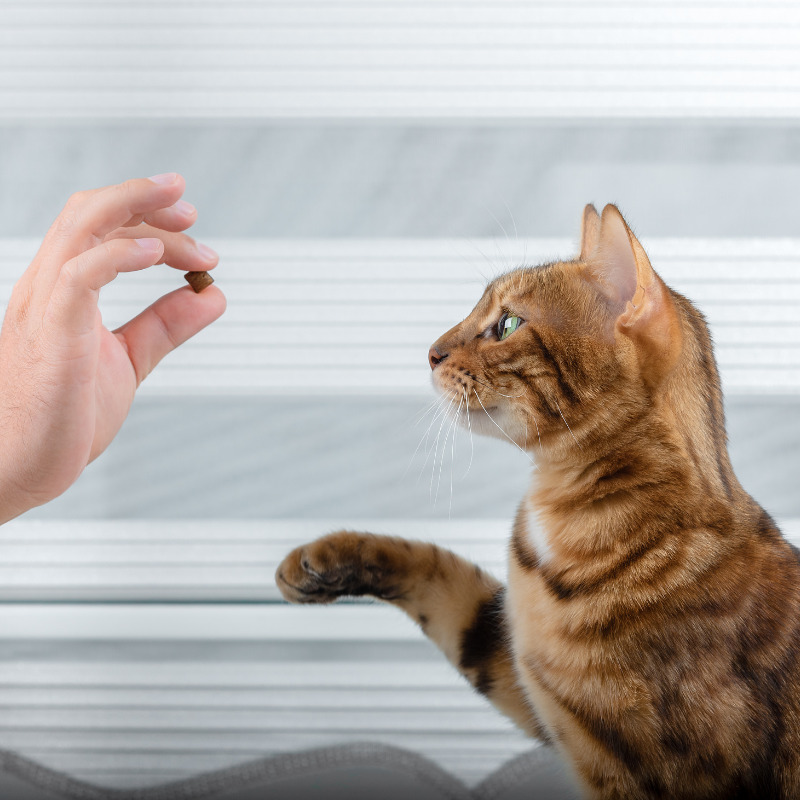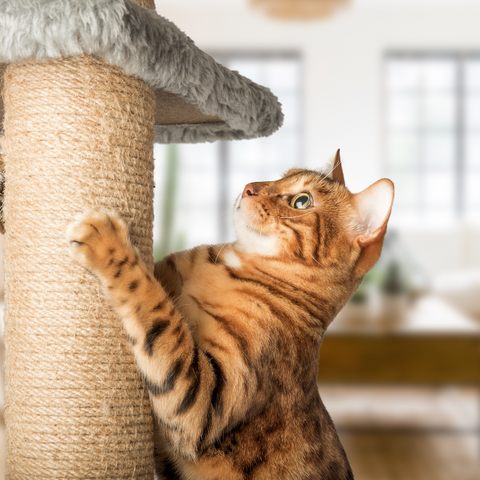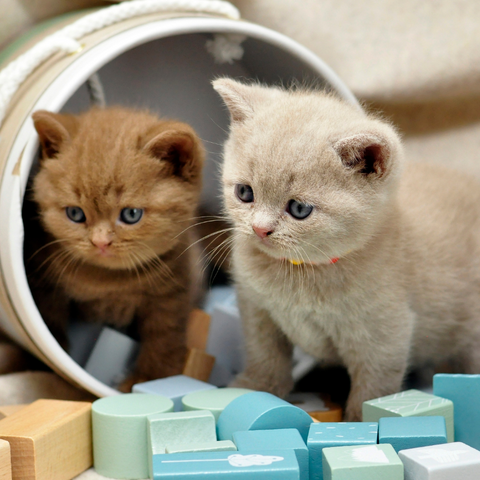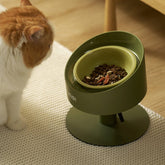How to Train Your Cat to Be a Good Citizen

Introduction
Cats make wonderful companions, but training them can be challenging. Unlike dogs, cats are independent and may not respond well to commands, rewards, or punishments. However, this doesn't mean cats are untrainable or you must tolerate poor behavior. Through patience, consistency, and positive reinforcement, you can instill good manners in your cat and help them adapt to a new home.This guide is particularly helpful if your cat is a kitten, or a strayed, rescue cat with no prior training. Kittens are more curious and impressionable than adult cats, and they can learn faster and easier. Strayed or rescue cats may have had traumatic or stressful experiences, and they may need more time and care to trust and bond with you. In either case, you can use the tips and tricks in this article to train your cat to be a good citizen and a happy member of your family.

Litter Box Training
One of the first things you need to teach your cat is where to do their business. Litter box training is usually not too difficult, as cats are naturally clean and prefer to bury their waste. However, there are some factors that can affect your cat's litter box habits, such as stress, illness, or environmental changes. Here are some steps to ensure a successful litter box training:-
Choose a suitable litter box. It should be large enough for your cat to turn around and dig comfortably, but not too high for them to climb in and out. You may need to try different types of litter boxes, such as covered, uncovered, or self-cleaning, to see what your cat prefers.
-
Choose a suitable litter. There are many types of litter available, such as clay, clumping, crystal, or natural. Some cats may have preferences or allergies to certain kinds of litter, so you may need to experiment to find the best one for your cat. Avoid scented or deodorized litter, as they may irritate your cat's nose or deter them from using the box.
-
Choose a suitable location. The litter box should be placed in a quiet, accessible, and well-ventilated area, away from food, water, and busy traffic. You may need to have more than one litter box if you have a large house or multiple cats. Avoid moving the litter box frequently, as this may confuse your cat.
-
Begin by introducing your cat to the litter box. Show your cat the litter box's location and let them explore it. You can also gently place your cat in the box and scratch the litter with your fingers to encourage them to dig. If your cat uses the box, praise them and consider rewarding them with a treat or a toy.
-
Regularly clean the litter box as cats prefer cleanliness and might avoid a dirty one. Scoop the litter box at least once a day. Every month, conduct a thorough cleaning, replacing all the litter. Wash the litter box with mild detergent and water, ensuring it is completely dry before refilling it with fresh litter.
-
Prevent and correct accidents. If your cat eliminates outside the litter box, avoid scolding or punishing them since this can cause fear or anxiety. Rather, clean the area thoroughly using an enzymatic cleaner to eliminate the odor and deter your cat from returning to the spot. Consider placing a litter box near the area or covering it with deterrents like aluminum foil or double-sided tape. If your cat frequently or persistently has accidents, consult your veterinarian to check for any medical issues.

Scratching Post Use
You should also teach your cat where to sharpen its claws. Scratching is a natural and healthy behavior for cats. It helps them stretch their muscles, mark their territory, and shed the dead outer layer of their nails. However, it can also damage your furniture, carpets, and curtains. To avoid this, provide your cat with an appropriate scratching post and deter them from scratching unsuitable surfaces. Here are some tips to encourage your cat to use the scratching post:-
Choose a suitable scratching post. It should be sturdy, stable, and tall enough for your cat to stretch their full body length. You may need to try different types of scratching posts, such as vertical, horizontal, or angled, to see what your cat likes. You can also choose different materials, such as sisal, carpet, or wood, to offer your cat some variety.
-
Choose a suitable location. The scratching post should be placed in a prominent and convenient area, where your cat spends a lot of time or where they tend to scratch. You may need to have more than one scratching post if you have a large house or multiple cats.
-
Introduce your cat to the scratching post. When you bring your cat home, show them where the scratching post is and let them explore it. You can also rub some catnip or a pheromone spray on the post to attract your cat's attention. Praise your cat when they use the post and reward them with a treat or a toy.
-
Prevent and correct unwanted scratching. If your cat scratches an inappropriate surface, avoid scolding or punishing them, as this might induce fear or anxiety. Instead, guide them towards the scratching post and praise them when they use it. Consider covering your furniture with protectors made of sisal or plastic. Regularly trimming your cat's nails can also help to minimize any potential damage.

Socialization with People and Other Pets
The last thing you need to teach your cat is how to get along with other living beings. Socialization is the process of exposing your cat to different people, animals, and situations, so that they can learn to be confident, friendly, and adaptable. Socialization is especially important for kittens, as they are more curious and impressionable than adult cats. However, socialization can also benefit older cats, as it can help them overcome their fears or aggression. Here are some ways to socialize your cat with people and other pets:-
Start early and gradually. The best time to socialize your cat is between 2 and 7 weeks of age, as this is when they are most receptive to new experiences. However, you can also socialize your cat at any age, as long as you do it slowly and gently. Introduce your cat to one person or animal at a time, and limit the exposure to a few minutes at first. You can gradually increase the duration and frequency of the interactions as your cat becomes more comfortable.
-
Use positive reinforcement. Make the socialization experience pleasant and rewarding for your cat, by offering them treats, toys, or praise. Avoid forcing your cat to interact with someone or something they are afraid of, as this may make them more stressed or defensive. Instead, let your cat approach at their own pace and retreat if they want to. Respect your cat's personality and preferences, and do not expect them to be friendly with everyone or everything.
-
Supervise the interactions. When you introduce your cat to another person or animal, make sure you are present and attentive to prevent any accidents or conflicts. You may need to separate your cat from the other party if they show signs of distress, such as hissing, growling, or hiding. You may also need to use a carrier, a leash, or a baby gate to ensure your cat's safety and security. You can also consult your veterinarian or a professional trainer if you need more guidance or assistance.
Conclusion
Training and socializing a cat may seem challenging but it's certainly achievable. With patience, consistency, and positive reinforcement, you can teach your cat good manners and help it adjust to a new home. This process can also be an enjoyable bonding experience. Following the advice in this article, you can train your cat to be well-behaved and a joyful member of your family.























